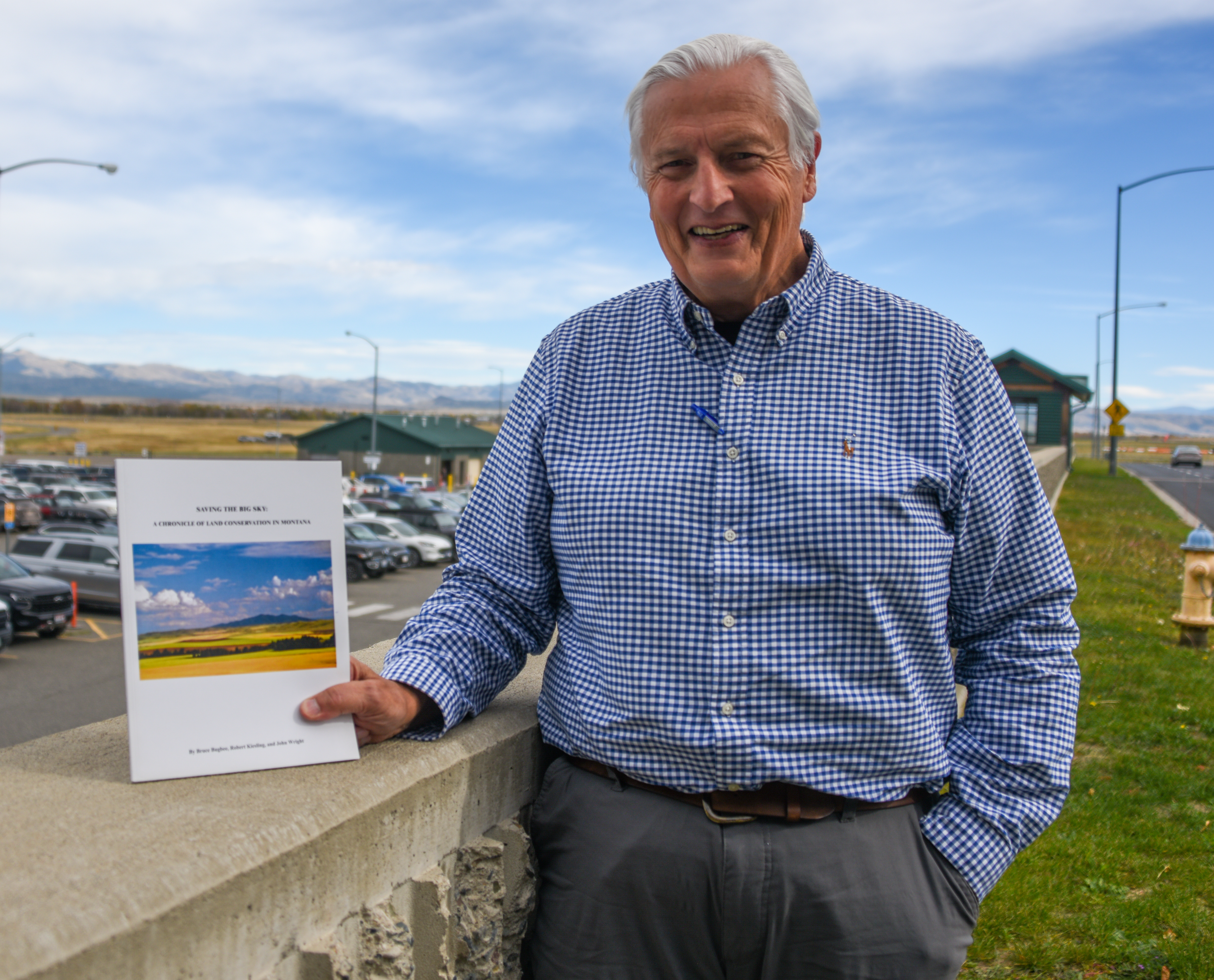
3 minute read
Saving the Big Sky
Book chronicles the history of private land conservation in Montana and the impact it's had on the state.
The Rattlesnake National Recreation Area and Wilderness is part of what makes Missoula special. However, its creation was far from certain.
Back in the 1970s, Bruce Bugbee explored the watershed with other University of Montana graduate students, wondering how this amazing resource could be conserved. In the early 1980s, Bruce was hired by the Montana Power Company (now NorthWestern Energy) to negotiate the sale of 21,000 acres of corporate land in the Rattlesnake to the U.S. Forest Service. The City of Missoula, Friends of the Rattlesnake and Congressman Pat Williams were strongly on board.
In 1980, the Rattlesnake National Recreation Area and Wilderness was established by Congress. It would never have happened without the company’s commitment to the people of Montana and the state’s natural environment.
It was Bruce’s experience in the Rattlesnake that inspired his career in land conservation and now his book on the history of private land conservation in Montana. Bruce is the co-author of the upcoming book, “Saving the Big Sky: A Chronicle of Land Conservation in Montana.” The book looks at the 6 million acres that have been voluntarily protected in Montana over the past 50 years and includes information on the role of NorthWestern Energy played in that conservation.
“They deserve to be recognized and thanked,” Bruce said.
The Alberton Gorge is a whitewater rafting treasure on the Clark Fork River. Years ago, the Montana Power Company owned the right to develop a dam site at the lower end of the gorge and flood adjacent lands. Bruce, on behalf of the Montana Power Company, worked with Five Valleys Land Trust to craft a land exchange project that protects riverside lands from development and keeps a dam from being built. The company worked with Bruce in a similar way to conserve Mesa Falls on the Snake River in Idaho.

Power generation is NorthWestern Energy’s core mission, but its projects can affect the people and landscapes of Montana.
When operations at Kerr Dam, now Selis Ksanka Qlispe Dam, impacted shoreline ecosystems around Flathead Lake, the Montana Power Company, which then owned the dam, purchased land to create Lost Trail National Wildlife Refuge west of Kalispell. This is called “off-site mitigation,” making up for habitat losses in one place by protecting similar habitats elsewhere.
In 1997, the Missouri-Madison River Fund was established to mitigate the effects of the company’s Madison and Missouri river dams. Nearly $20 million in NorthWestern Energy and public sector funds have been leveraged to improve the quality of public recreation access along these prized waterways.
“The Missouri-Madison River Fund has been a huge factor in land conservation and public access,” Bruce said. “This collaborative process has been highly successful.”

When Bruce reflects on his 50-year career in land conservation, he sees relationships, finance and reciprocity as key ingredients.
“When we treat each other with respect, the public and the land benefit in the long run,” Bruce said.










